Deinstalling a Museum Exhibit
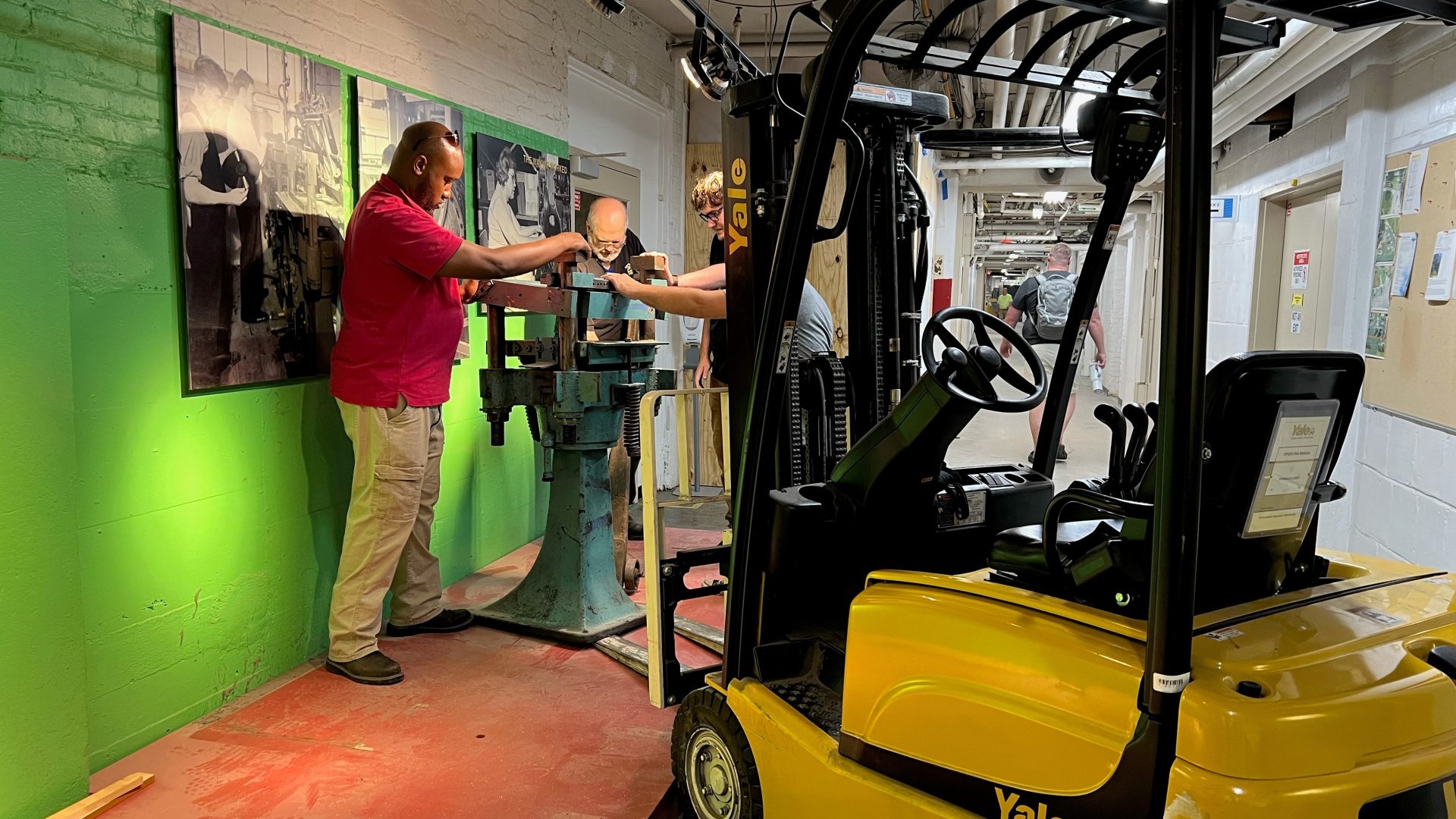
The saying “it takes a village” can be applied in any number of settings. In our case, it has truly taken a village of our skilled colleagues to help deinstall some of the larger pieces from our museum’s permanent exhibits. These galleries featured some amazing, yet incredibly heavy, pieces of machinery and equipment. We needed to bring in some reinforcements to safely move them from the galleries and into storage.
During this deinstallation process, we recruited help from our stellar maintenance department. With lots of care, patience, and a forklift or two, the large pieces in our collection were safely put onto pallets, strategically maneuvered into our not-so-large elevators, and carefully wheeled back into storage. The artifacts were then securely wrapped to protect them from potential dust or dirt and labeled so each object would be easy to identify.
Ensuring the protection of our artifacts was my top priority throughout the deinstallation process. When artifacts are damaged, it often happens when they are handled. As such, this was a crucial time for collections care practices. Our colleagues used the utmost care and consideration when moving these pieces of heavy equipment. I’m so grateful for the maintenance team lending a hand on this difficult project.
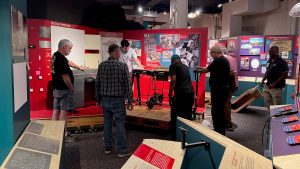
In addition to the larger artifacts, we also needed help moving four very large metal storage cabinets from collections storage to a temporary location. These cabinets couldn’t be disassembled, so they had to be moved as one unit. And, unfortunately, they were just a tad too big to fit onto either of our elevators in the museum. The only option was to move them down the staircase.
Several maintenance staff members helped us navigate these large, heavy units down the flight of stairs and pivot around a landing to another flight of stairs. Much sweat, consternation, and problem solving later, the cabinets are now safely tucked away, once again storing artifacts until they are moved again to our soon-to-be-constructed new collections storage room. Fortunately, the new elevator will be much larger and able to accommodate these cabinets, so moving them should be considerably less difficult the next time around.
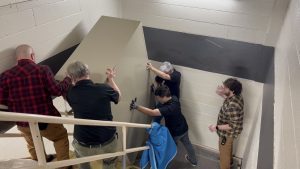
This deinstallation process clearly required many hands on deck. We were fortunate and very thankful to have a group of co-workers who were willing and able to pitch in and help the museum department with these challenging undertakings. So now, with these artifacts safely housed in storage, the machinery will patiently wait until we need to call on our friends in the maintenance department to help move these large objects once again.
Share this article.
Related articles
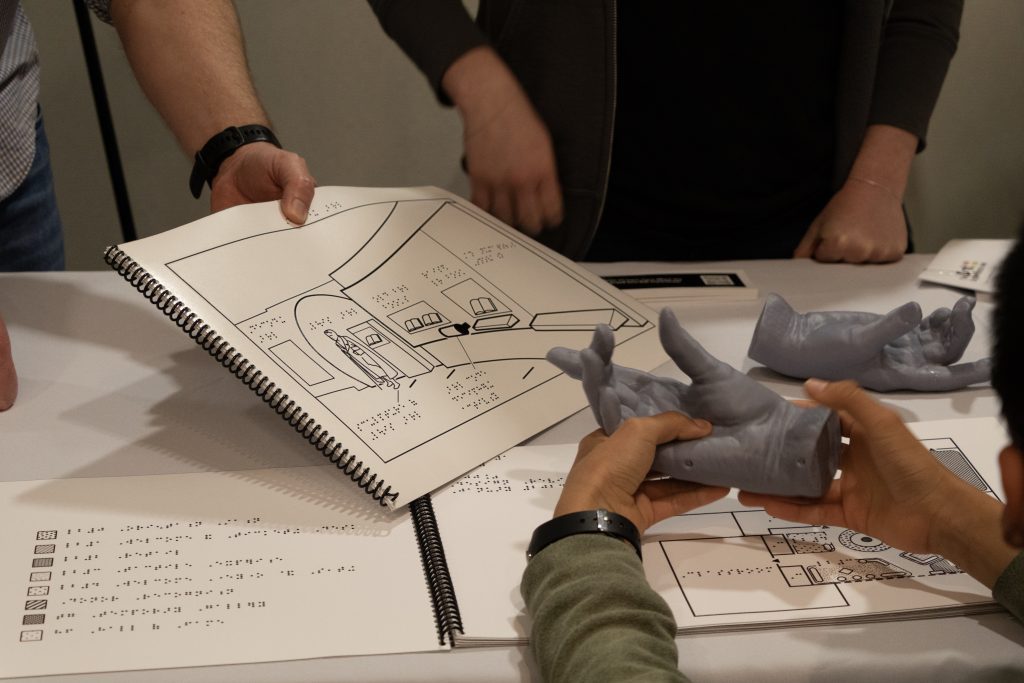
Defining The Dot Experience: Everything You Need to Know
What is The Dot Experience? The Dot Experience is APH’s re-imagined museum set to open in 2026. Designed with an...
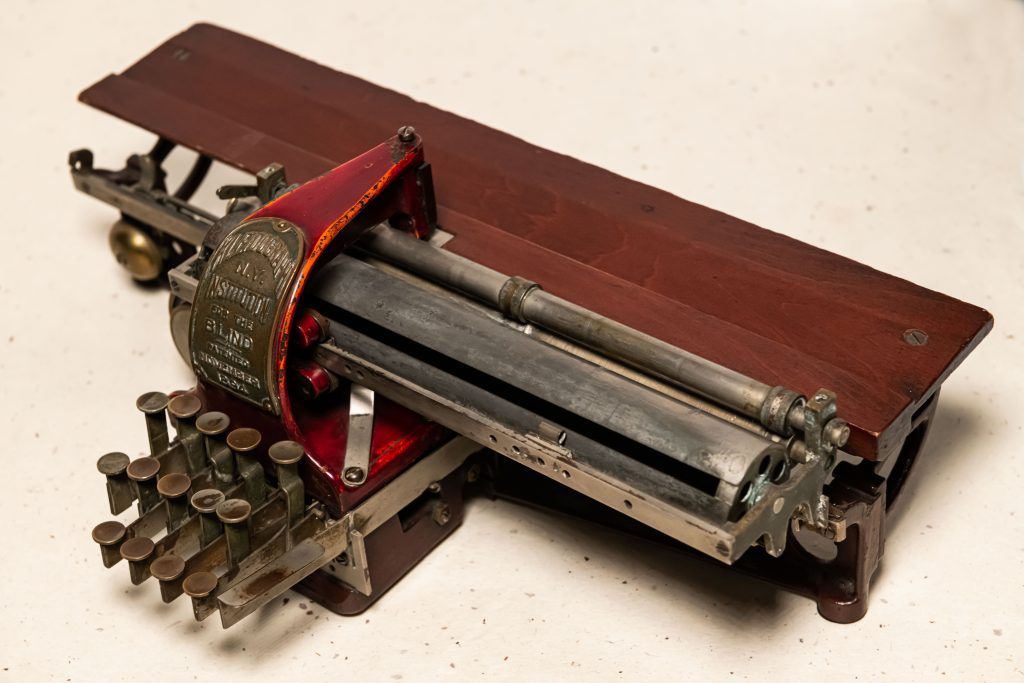
Blindness History Basics: History of Braille Writers
When fifteen-year-old Louis Braille presented his tactile system of raised dots in 1824, he hoped the new system would provide a...

Please Touch! Making Museum Collections Accessible
What do you think of when you hear the words “museum collection?” Artifacts like objects, paintings, photographs, rare books, or...
